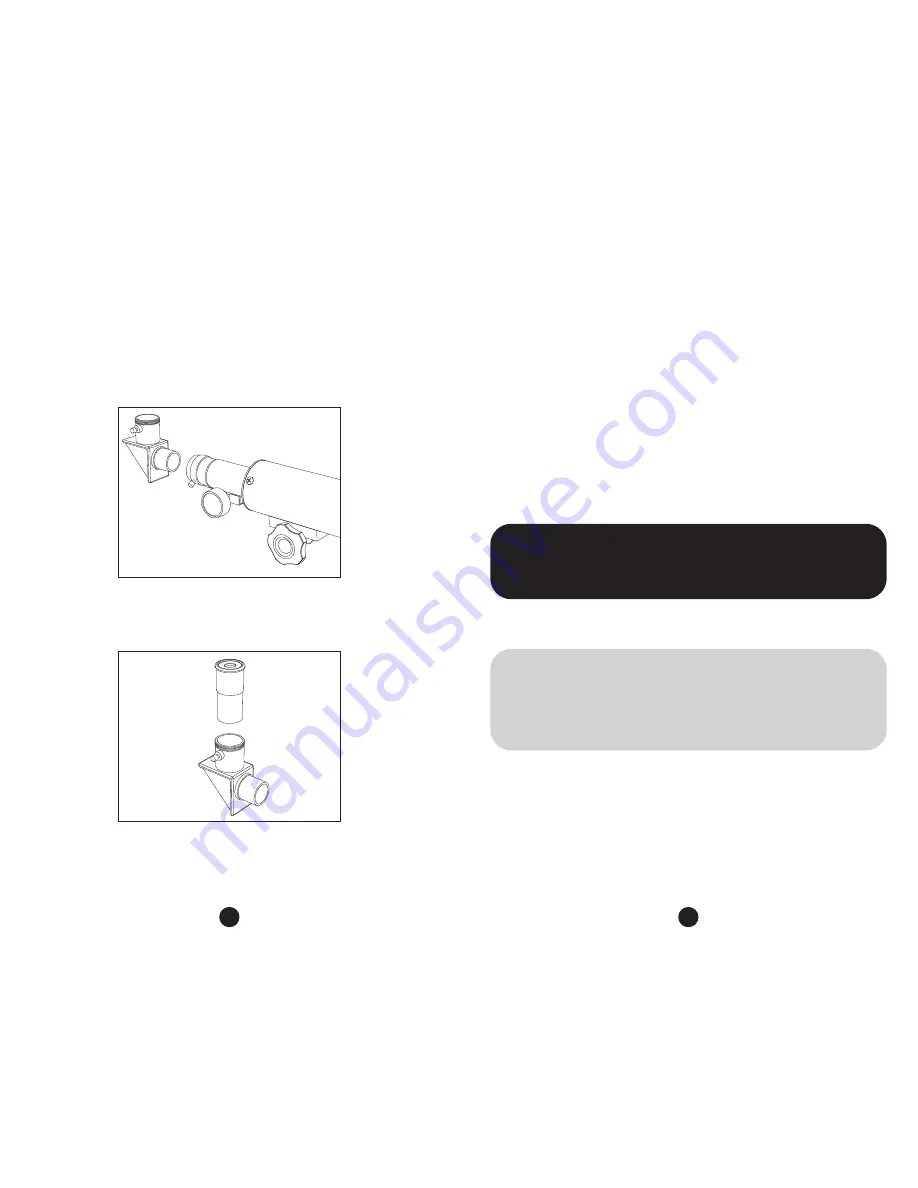
7
6
5. Find the azimuth lock knob (I) and tighten it, if necessary, by turning
it clockwise. The knob, when fully tightened, will lock your
telescope’s horizontal movement.
6. If the diagonal mirror has not come already inserted into the focuser,
remove the protective plastic cap over the telescope’s focuser (G) by
loosening the two small screws. Remove the black plastic cap from the
diagonal mirror (F) and insert the mirror into the focusing tube. Secure
the mirror in place by tightening the two small screws. (See Figure 3.)
7. Loosen the protective plastic cap from the diagonal mirror by
loosening the single screw. Locate the 20mm eyepiece, insert it into
the diagonal mirror, and tighten the screw (See Figure 4).
Using Your Telescope
1. For best results, take your telescope outside. Do not aim it through a
window which will cause distortions.
2. Let your telescope adjust to the outside temperature. Your telescope
will perform much better if the lenses and the air inside the tube are
all the same temperature as the outside air. In extreme temperatures,
it may take up to 30 minutes to acclimate your telescope.
3. Start viewing with your low power (20mm) eyepiece in place because
it gives you the widest angle and brightest, sharpest views.
4. Loosen the altitude and azimuth lock knobs and move the telescope
in the direction of an object you wish to view. Look through the
eyepiece and pan the telescope until the object appears centered in
the telescope’s field of view (the portion of the sky that you can view
through a telescope). Once it is in your field of view, tighten the
altitude and azimuth knobs.
5. Look through the eyepiece, turning the focus knob until the image is
clear and sharp.
Figure 3
Figure 4
Note:
When looking through the diagonal mirror, objects will
appear right side up, but reversed, like a reflection in a mirror. This
is normal for all astronomical telescopes. Your telescope is supplied
with an erecting eyepiece, which properly orients images for
terrestrial viewing. See page 8 for directions for using your
erecting eyepiece.
CAUTION:
Never look directly at the sun, with or without your telescope. Never
aim your telescope at the sun, or anywhere near the sun. Instant and
irreversible eye damage can occur, including blindness.









